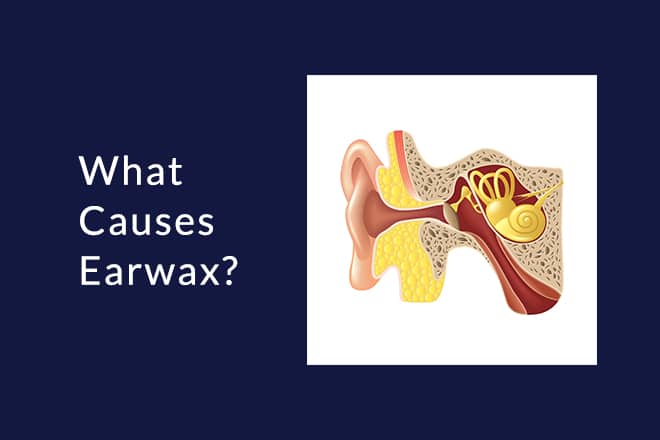The production of earwax is an essential function of a healthy ear and is one of the ways the body protects all the delicate mechanisms that allow us to hear. Ear wax traps unwanted particles and stops them moving into the ear canal and also contains properties that help to prevent ear infections.
How Is Earwax Produced?
Earwax is produced by the ceruminous and sebaceous glands in the outer ear canal. These glands secrete substances that mix with hair, dead skin cells, dust and dirt to create the waxy substance that cleans, protects and lubricates our ear canals.
This is a natural, healthy process, but some of us produce far more wax than we need to.
Excess Earwax Causes?
Excessive earwax is a result of a number of factors. Some of the most common causes include:
- Environmental factors: If you live or work in a space that is prone to a lot of dust, your ear wax may trap more of these particles leading to and increased volume of wax
- Family history: Your genetics may cause you to produce more earwax than is necessary. If your mum or dad struggled with earwax, there’s a chance you may too!
- Anatomy: Narrow, small, bendy or hairy ear canals can cause wax to build up and lead to wax impaction
- Age: As we get older, the self cleaning mechanism of the ear may not work as well as it used to. The oil glands that produce wax begin to atrophy, and the wax becomes drier and more prone to impacting. Whilst this can happen more commonly as we age, it can also occur at any stage in life or be related to other factors such as prior ear surgery or radiation therapy to the head or neck
- Lifestyle: If you wear hearing aids, use cotton buds or other implements in the ear, or use ear candles, this can prevent the natural pathway of wax out of the ear. Wax may also be pushed down the canal where it may become stuck
Excessive earwax production can impact on ear health, leading to symptoms (e.g. a feeling of blockage and hearing loss), and even infection.
Symptoms of Excessive Earwax
If you experience any of the following, your ears may be producing too much earwax:
- Hearing loss
- Tinnitus (a ringing in the ears)
- Feeling of fullness and blockage
- Itching
- Pain
- Discharge
- Odour
- Cough
The Best Way to Remove Earwax
The ears are self cleaning organs and for the majority of people earwax does not need ‘managing’. If you are unlucky enough to suffer from excessive earwax however don’t despair – there are painless and easy removal methods available to you. Don’t be tempted by the cotton bud!
For safe and effective ear wax removal, you should turn to ear wax softening drops or manual removal such as micro suction by a professional to remedy blocked ears and excess wax.
Professional Earwax Removal
Professional ear wax removal is a safe and effective method for removing excess ear wax. Micro suction is performed at our dedicated ear wax removal clinics. Small instruments and gentle suction are used to remove wax from the ear canal without the need to touch the ear canal wall or drum which is a common cause of damage. Wax is removed by qualified registered nurses who are experienced in the procedure.
Contact Earworx to book an appointment today.
The production of earwax is a fascinating process of self-protection, however you could be experiencing too much of a good thing! If you are suffering from symptoms related to ear wax build up, seek help as soon as possible. Life is so much better with clear ears.





